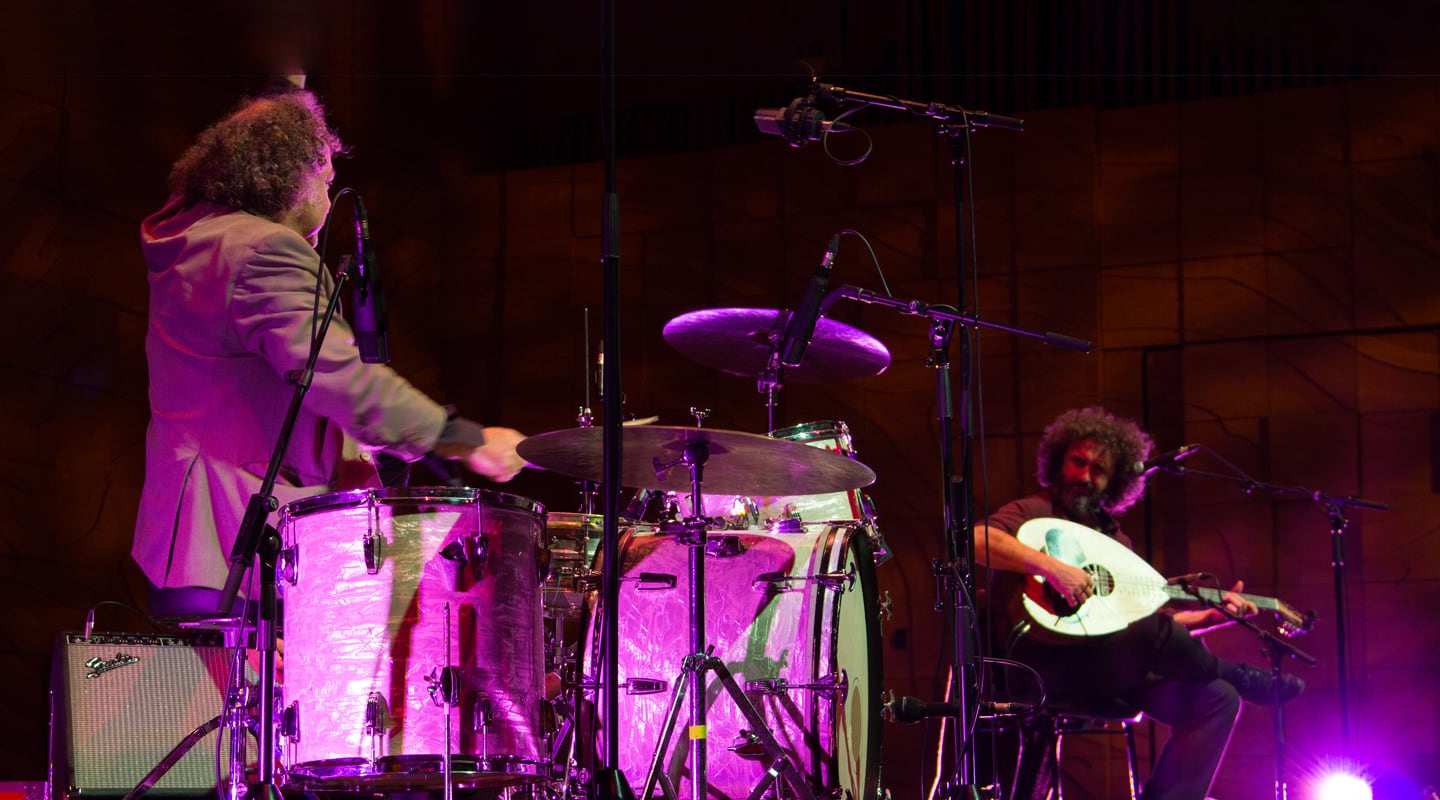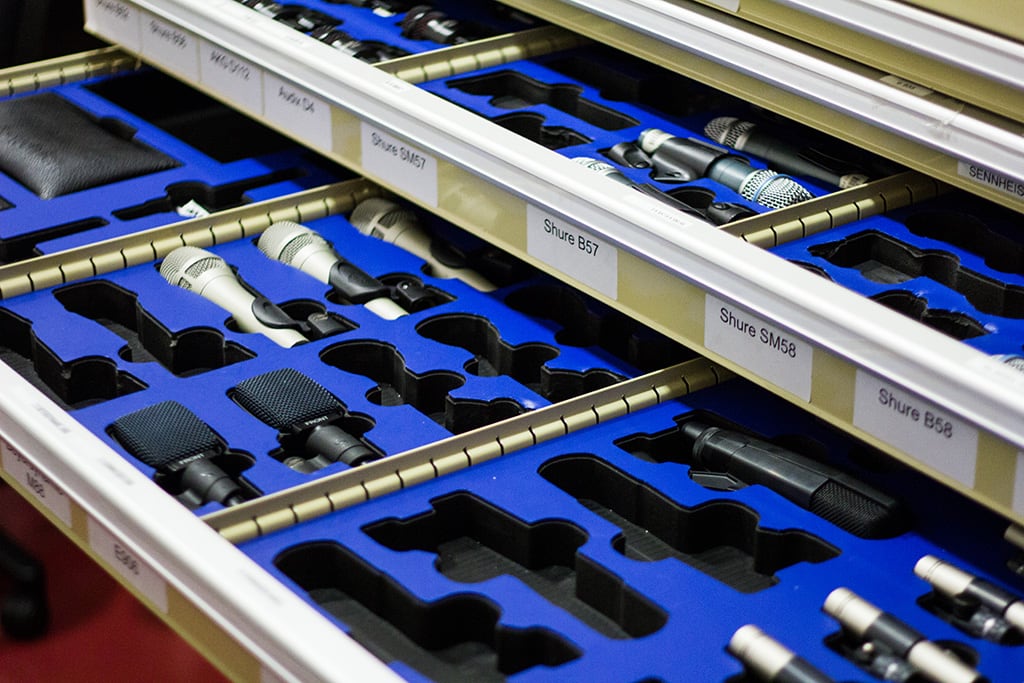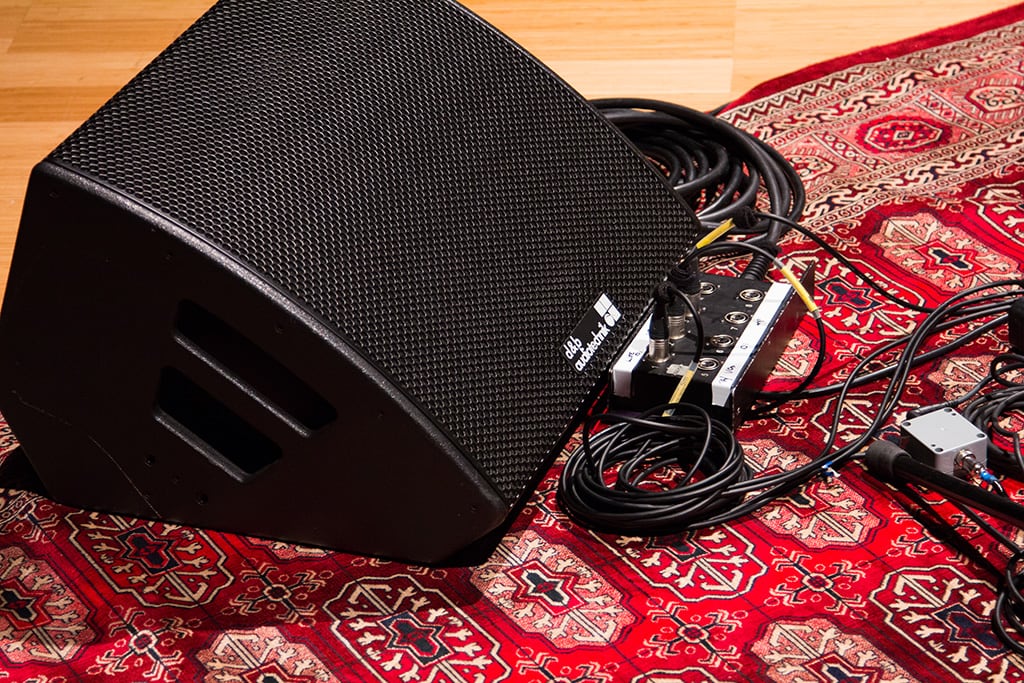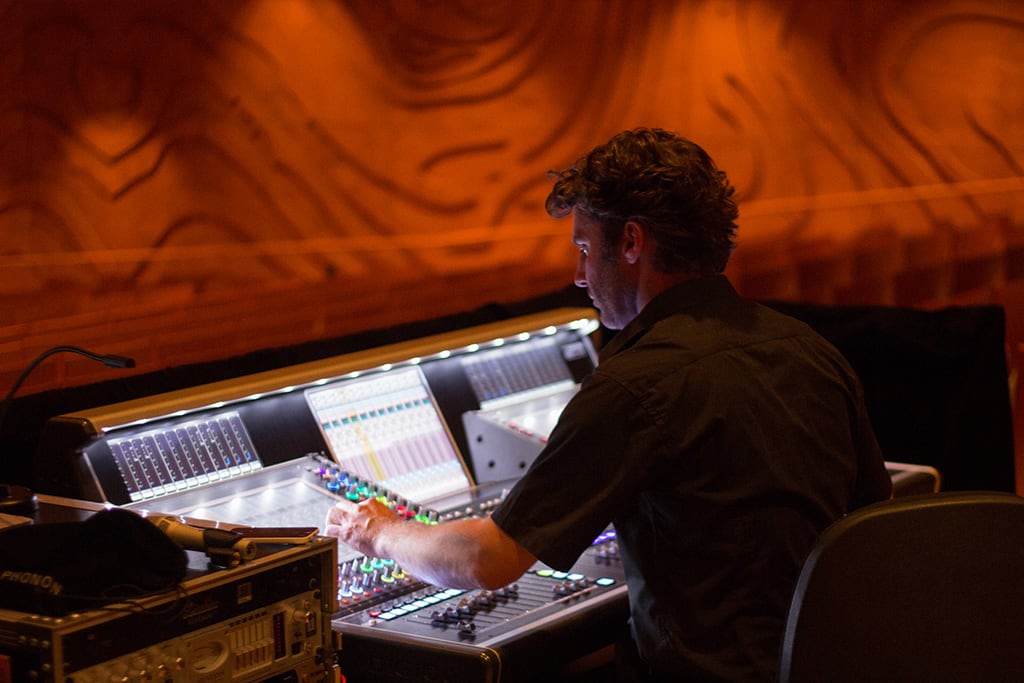
Xylouris White Live
Cretan lute with rock drums is not your average gig combo. But hey, it’s the Melbourne Recital Centre, where the fringes of culture suit up on the main stage.
Although the Melbourne Recital Centre’s Elisabeth Murdoch Hall was purpose built for chamber orchestras, every genre makes its way through the doors at some point — blues, jazz, techno, avant-garde, world music, and rock ’n’ roll, too. This time, it was Xylouris White, a combo of lute player/vocalist George Xylouris, and Dirty Three drummer Jim White. Though far from the hall’s ideal source, FOH engineer Jake Martin isn’t a stranger to drums, and he reckons Cretan lute isn’t all that unfamiliar either.
When a live drum kit appears onstage, it’s usually ensconced in carpet and 10m-high drapes. This time, with only a duo, the dressing is limited to a couple of rugs on the floor. There are operable banners hanging around the perimeter, which were fully deployed, but only shave off a fraction of the reverb time. Jake isn’t worried about the liveliness, though: “The beauty of the space is you hear and feel what’s happening out in the room,” he explained. “Jim’s a pro, so he’ll play to the space. Plus, the acoustic is beautiful, so it’s nice to have it open.”
On the night, the duo’s dynamics ranged from slow, lightly-picked numbers with droning vocals to full-blown strumming accompanied by pounding rhythms. Jake worked the PA brilliantly to reinforce the stage sound. “I don’t really want to hear the mics and PA working, I just want to hear the music,” he explained. “Putting it through the PA in a big room like this actually helps diffuse it and makes it sound like it’s in the room again.” The natural quality of the mix left the crowd to lock into the humorous dichotomy of George’s quiet intensity and Jim White’s idiosyncratic stage presence — walking around shoeless and dropping his sticks over his drums with flair. Not your average gig, but entirely entrancing.

The neatly laser cut mic storage lockers are a sight to behold; rows and rows of Neumanns, DPAs, AKGs, and Shures perfectly laid out and ensconced in blue surrounds.
The d&b T series PA is configured into left/centre/right hangs, with adjustable heights, with two T10s and B4 subs ground stacked on each side. The centre also recently acquired larger d&b V series ground stacks for gigs requiring some serious SPL. “National Audio Systems spend a lot of time with us in here time aligning and tweaking,” said Jake. “We’ve got Meyer Sound Galileo in line doing all the processing, which we’ve got networked out the front. When we use the powerful ground stacks, the array is timed to those, otherwise everything is timed to the array. A lot of guys just bus the centre, -6dB down from each side. I often use it in a heavy mix to get vocal clarity. If there’s detail missing it helps to get it away from the walls, but I never separate it fully.


Jake: “The sound doesn’t change drastically with a full house, the temperature change is the bigger factor. The seats are supposedly acoustically designed to soak up sound exactly like a human body.”
If anyone can handle obscure instrument combinations its freelance engineer, Jake Martin. “I’ve miked up everything here.” He was previously employed full-time at the Recital Centre, but after moving back to Bendigo, makes the trip back for shows a couple of times a week. He’s sitting at the Digico SD5 at FOH in the hall. They also have an SD8 for monitors and an SD11 which typically services the smaller Salon. It was a bit of a nightmare start. There were two brown outs during the day, one which tripped all the amp breakers and took out the wireless network just prior to the show, resulting in a short delay while Jake got everything back online. Once everything came back, it was smooth sailing from then on.
The mix position at the back of the auditorium is situated under the balcony, so there’s a little bit of mid range buildup to be aware of. “I almost never do additive EQ; I avoid it like the plague,” he said. “I used a graphic on the vocal to tune the SM58. I’ll tickle some instruments with compression, and put a bit on the overheads. I do have a parallel vocal channel that’s getting slammed. I used a really short delay as a thickener for the lute blend, which is an easy way to get presence in here. I’ve got a Lexicon PCM96 hall on the vocal and a plate on the snare bottom.”


Jake: “I don’t usually use Sennheiser MD421s on the toms, but it was on the rider. I’m not really into gating drums, I like them live with spill and bleed. The Beyer M88 on the kick drum is a favourite of mine, and AKG C414s as overheads are standard here. I tend to keep them fairly low because the room is live. Jim wanted something dark for the hi-hats, so I brought in a Line Audio CM3 pencil condenser, which is pretty wide, but I just put it close.”
George plays a Cretan lute, which, he explained, “has four double strings, the tuning is in fifths — E, A, D, G — opposite to a guitar. It’s a half pear, long neck, with moveable frets. I do different open tunings throughout the show, changing maybe a couple of different times during the show. The Cretan lute has more bass and body than other lutes in Greece, we strum a lot of in Crete, so it suits.”
George’s lute had two pickups inside, which are combined and sent straight into the DI. Then the link out fed his pedals — an Echoplex preamp driver and Electro-Harmonix Holy Grail reverb — which was then split to the two Fender Twin amps (one as foldback for Jim White). The third lute channel was fed by a Neumann KM184 pencil condenser. “I thought the blend of the DI, the mic and amp was nice,” said Jake. “It’s got dirt as well as finesse.”

















RESPONSES